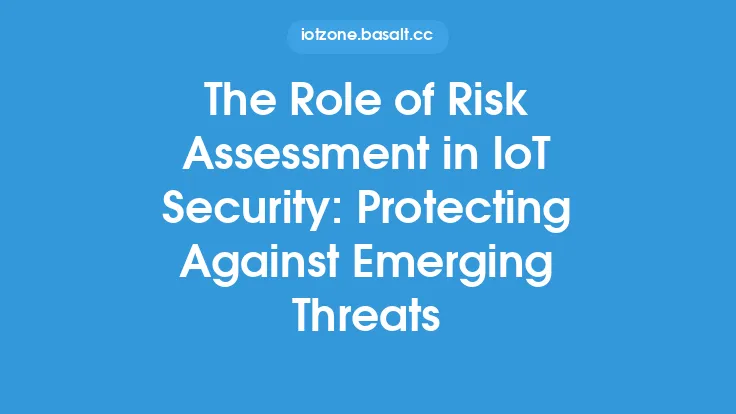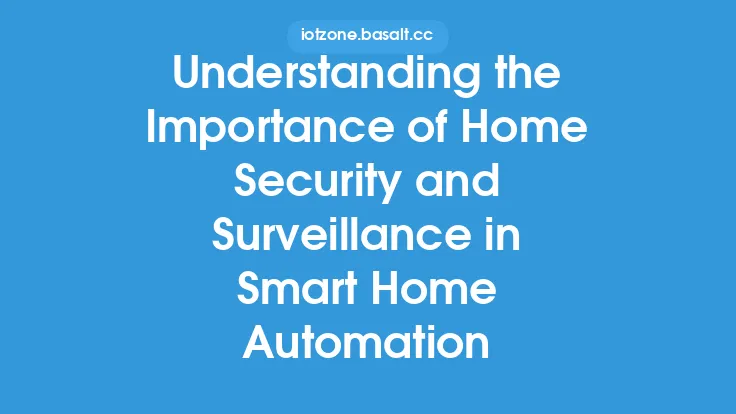The increasing number of devices connected to the internet has led to a significant rise in the attack surface, making it easier for hackers to launch attacks and compromise sensitive information. One of the most effective ways to mitigate these risks is through network segmentation, a technique that involves dividing a network into smaller, isolated segments or sub-networks. In the context of IoT security, network segmentation plays a crucial role in preventing the lateral movement of attackers and reducing the risk of a breach.
Introduction to Network Segmentation
Network segmentation is a security technique that involves dividing a network into smaller, isolated segments or sub-networks. Each segment is separated from the others by a virtual or physical boundary, and communication between segments is controlled and monitored. This approach helps to limit the spread of malware and unauthorized access to sensitive areas of the network. In IoT networks, segmentation is particularly important, as it helps to prevent the compromise of sensitive devices and data.
Benefits of Network Segmentation in IoT Security
Network segmentation offers several benefits in the context of IoT security. Firstly, it helps to reduce the attack surface by limiting the number of devices that can be accessed by an attacker. Secondly, it prevents the lateral movement of attackers, making it more difficult for them to move from one device to another. Thirdly, it enables more effective monitoring and control of network traffic, making it easier to detect and respond to security incidents. Finally, it helps to ensure compliance with regulatory requirements and industry standards, such as PCI-DSS and HIPAA.
Types of Network Segmentation
There are several types of network segmentation, including virtual local area networks (VLANs), subnets, and network access control lists (ACLs). VLANs are a type of network segmentation that involves dividing a network into smaller, isolated segments based on the physical location of devices. Subnets are a type of network segmentation that involves dividing a network into smaller, isolated segments based on IP addresses. Network ACLs are a type of network segmentation that involves controlling access to network resources based on IP addresses and ports.
Implementing Network Segmentation in IoT Networks
Implementing network segmentation in IoT networks requires careful planning and design. The first step is to identify the different types of devices and data that need to be segmented. This includes identifying sensitive devices, such as cameras and sensors, and sensitive data, such as personal identifiable information (PII). The next step is to design a segmentation architecture that meets the needs of the organization. This includes deciding on the type of segmentation to use, such as VLANs or subnets, and configuring network devices, such as routers and switches. Finally, the segmentation architecture must be implemented and tested to ensure that it is working effectively.
Challenges and Limitations of Network Segmentation
While network segmentation is an effective way to improve IoT security, it also presents several challenges and limitations. One of the main challenges is the complexity of implementing and managing a segmented network. This requires significant expertise and resources, particularly in large and complex networks. Another challenge is the need to balance security with usability and convenience. Overly restrictive segmentation can limit the functionality of devices and applications, while overly permissive segmentation can compromise security. Finally, network segmentation must be continuously monitored and updated to ensure that it remains effective and relevant.
Best Practices for Network Segmentation in IoT Security
To get the most out of network segmentation in IoT security, several best practices should be followed. Firstly, a thorough risk assessment should be conducted to identify the types of devices and data that need to be segmented. Secondly, a clear segmentation architecture should be designed and implemented, taking into account the needs of the organization. Thirdly, network devices and systems should be configured to enforce segmentation, using techniques such as VLANs, subnets, and ACLs. Fourthly, segmentation should be continuously monitored and updated to ensure that it remains effective and relevant. Finally, segmentation should be integrated with other security controls, such as firewalls and intrusion detection systems, to provide comprehensive security.
Future of Network Segmentation in IoT Security
The future of network segmentation in IoT security is likely to be shaped by several trends and technologies. One of the main trends is the increasing use of software-defined networking (SDN) and network functions virtualization (NFV) to implement and manage network segmentation. Another trend is the use of artificial intelligence (AI) and machine learning (ML) to detect and respond to security incidents in segmented networks. Finally, the increasing use of cloud computing and edge computing is likely to require new approaches to network segmentation, such as cloud-based segmentation and edge-based segmentation. As the IoT continues to evolve and grow, network segmentation is likely to play an increasingly important role in ensuring the security and integrity of IoT devices and data.





